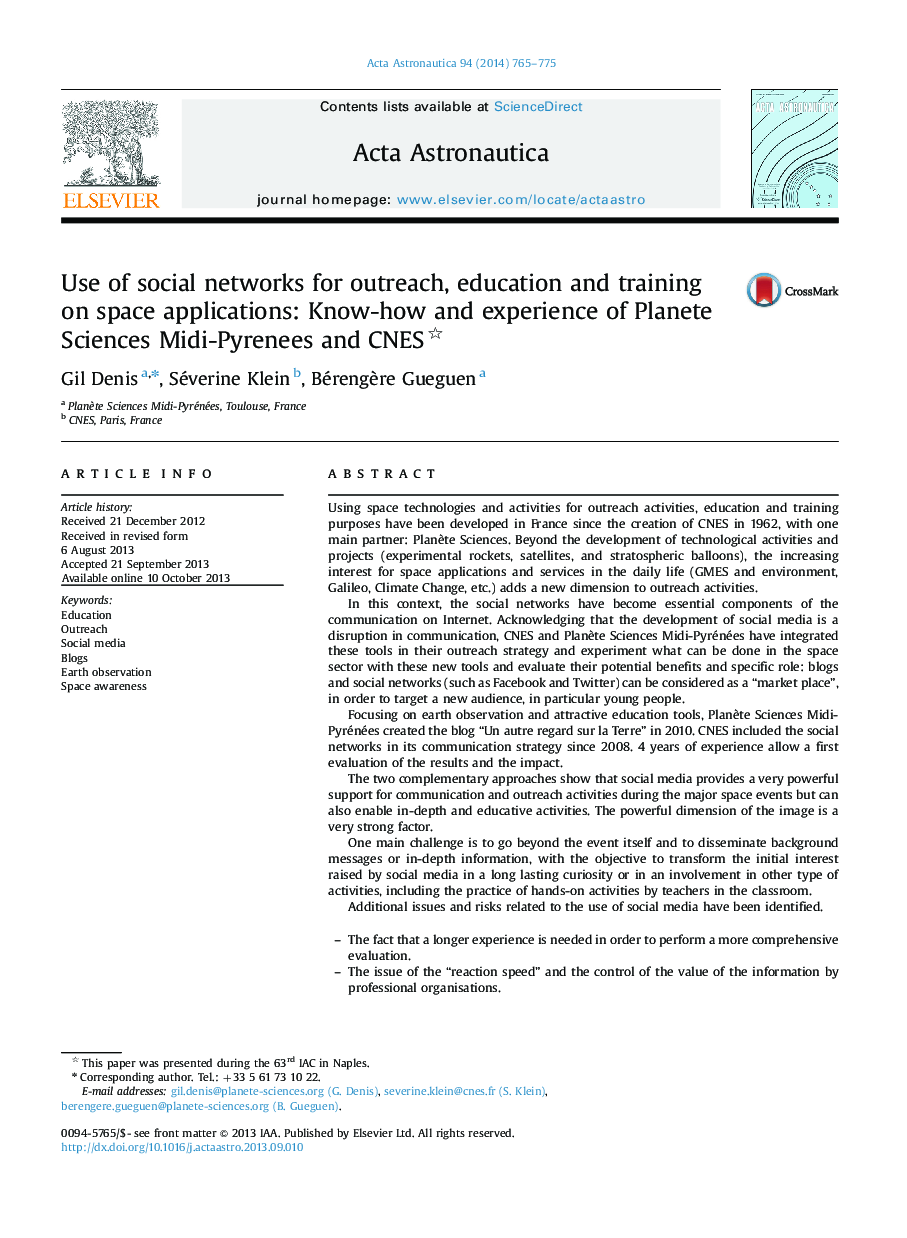| کد مقاله | کد نشریه | سال انتشار | مقاله انگلیسی | نسخه تمام متن |
|---|---|---|---|---|
| 1714786 | 1013340 | 2014 | 11 صفحه PDF | دانلود رایگان |

• The development of social media is a good opportunity for education and outreach.
• Planète Sciences and CNES have integrated these tools in their outreach strategy.
• 3 years of experience provide a comprehensive evaluation of the benefits and risks.
• Social media are a very good support for events but also for in‐depth activities.
• An efficient implementation requires a sustained effort and clear rules.
Using space technologies and activities for outreach activities, education and training purposes have been developed in France since the creation of CNES in 1962, with one main partner: Planète Sciences. Beyond the development of technological activities and projects (experimental rockets, satellites, and stratospheric balloons), the increasing interest for space applications and services in the daily life (GMES and environment, Galileo, Climate Change, etc.) adds a new dimension to outreach activities.In this context, the social networks have become essential components of the communication on Internet. Acknowledging that the development of social media is a disruption in communication, CNES and Planète Sciences Midi-Pyrénées have integrated these tools in their outreach strategy and experiment what can be done in the space sector with these new tools and evaluate their potential benefits and specific role: blogs and social networks (such as Facebook and Twitter) can be considered as a “market place”, in order to target a new audience, in particular young people.Focusing on earth observation and attractive education tools, Planète Sciences Midi-Pyrénées created the blog “Un autre regard sur la Terre” in 2010. CNES included the social networks in its communication strategy since 2008. 4 years of experience allow a first evaluation of the results and the impact.The two complementary approaches show that social media provides a very powerful support for communication and outreach activities during the major space events but can also enable in‐depth and educative activities. The powerful dimension of the image is a very strong factor.One main challenge is to go beyond the event itself and to disseminate background messages or in-depth information, with the objective to transform the initial interest raised by social media in a long lasting curiosity or in an involvement in other type of activities, including the practice of hands-on activities by teachers in the classroom.Additional issues and risks related to the use of social media have been identified.–The fact that a longer experience is needed in order to perform a more comprehensive evaluation.–The issue of the “reaction speed” and the control of the value of the information by professional organisations.–The issues raised by the use of social networks by employees.–The management of the e-reputation.A last recommendation is related to the resources and manpower needed to animate, drive and develop an online community and manage the social media. This activity requires also a very good knowledge of space activities and shall involve skilled people and experts.
Journal: Acta Astronautica - Volume 94, Issue 2, February 2014, Pages 765–775